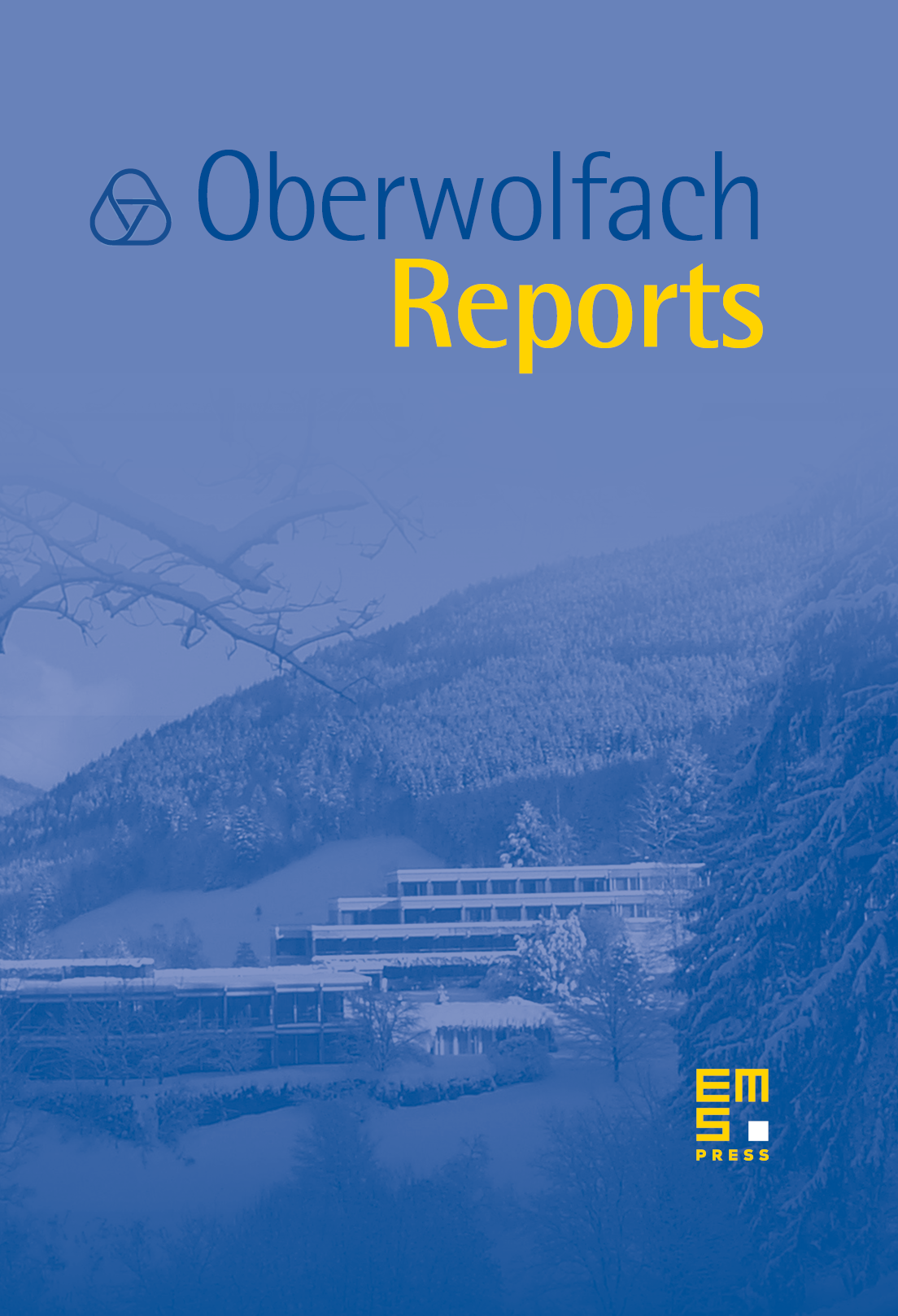Classical and Quantum Mechanical Models of Many-Particle Systems
Anton Arnold
Technische Universität Wien, AustriaCarlo Cercignani
Politecnico di Milano, ItalyLaurent Desvillettes
CMLA-ENS, Cachan, France

Abstract
The Oberwolfach meeting described here aimed at presenting the latest mathematical results in the field of kinetic theory (both classical and quantum).
There were 50 participants, among which 15 young participants (PhD students, post-docs or young assistant professors). Two of them (M.-P. Gualdani and R. Strain) were invited within the program “US Junior Oberwolfach Fellows”: they are promising young researchers working in the US.
The program of the meeting was made in such a way that a lot of time remained for people to meet informally and discuss about scientific issues. It also ensured that almost everybody attended all (or most of) the scheduled talks .
The program was structured in the following way: three subtopics were defined (relationships between micro/meso/macroscopic models; kinetic theory for complex particles: granular media, coagulation/fragmentation, chemotaxis and sprays; quantum mechanical kinetic theory). For each subtopic, there were a few (2 or 3) longer talks (about 40 minutes) by senior participants. For those talks, a specific effort of clarity was asked to the speakers, and the subject had to be rather broad.
Then, shorter talks of about 20 minutes were planned , on more specialized issues. Finally, a special (much longer) talk in two parts was presented by one of the participants (C. Villani), in order to describe in a very didactical way an emerging link between kinetic theory, optimal transport, and Riemannian geometry.
Some participants did not give a talk within this program, but organized an informal discussion around a poster, with an audience composed of specially interested people.
Here is a brief description of each of the subtopics.
- Much attention has been given to the passage from microscopic to mesoscopic models, and the latest breakthroughs in this subdomain have been described. The talks by R. Esposito, F. Golse and P.-E. Jabin are representative of this line of ideas. The question related to the Boltzmann equation and its macroscopic limit have also been presented, like for example in the works by A. Bobylev and H. S. Yu. This last talk is typical of the new and brilliant ideas recently introduced by the Asiatic research groups on kinetic equations.
- Many talks have been devoted to the study of kinetic equations for complex particles, showing the interest of the mesoscopic description in many models. The use of entropy methods in these new fields of application has led to interesting and unexpected results, as shown in the talks by J. Carrillo or K. Fellner.
- Finally, the asymptotics of quantum mechanical models has played a central role in this meeting, and in particular the rigorous derivation of (simplified) one-particle models from many-particle systems. A typical example of this research line was presented in the talk of L. Erdős on the derivation of the Gross–Pitaevskii equation for Bose–Einstein condensates.
We finally would like to emphasize the ideas and trends which have emerged within the two or three last years and which have been present in this Oberwolfach meeting: a new approach of the relations between the hydrodynamic and non hydrodynamic part of the Boltzmann equation; explicit estimates for the spectrum of the linearized Boltzmann equation when the kernel is singular; the treatment of coagulation/fragmentation equations as infinite-dimensional reaction-diffusion equations with the help of entropy methods; the use of the ideas of kinetic theory in fields coming out from the industry rather than from theoretical physics (supply chains, industrial sprays, etc.).
Cite this article
Anton Arnold, Carlo Cercignani, Laurent Desvillettes, Classical and Quantum Mechanical Models of Many-Particle Systems. Oberwolfach Rep. 3 (2006), no. 4, pp. 3189–3258
DOI 10.4171/OWR/2006/54